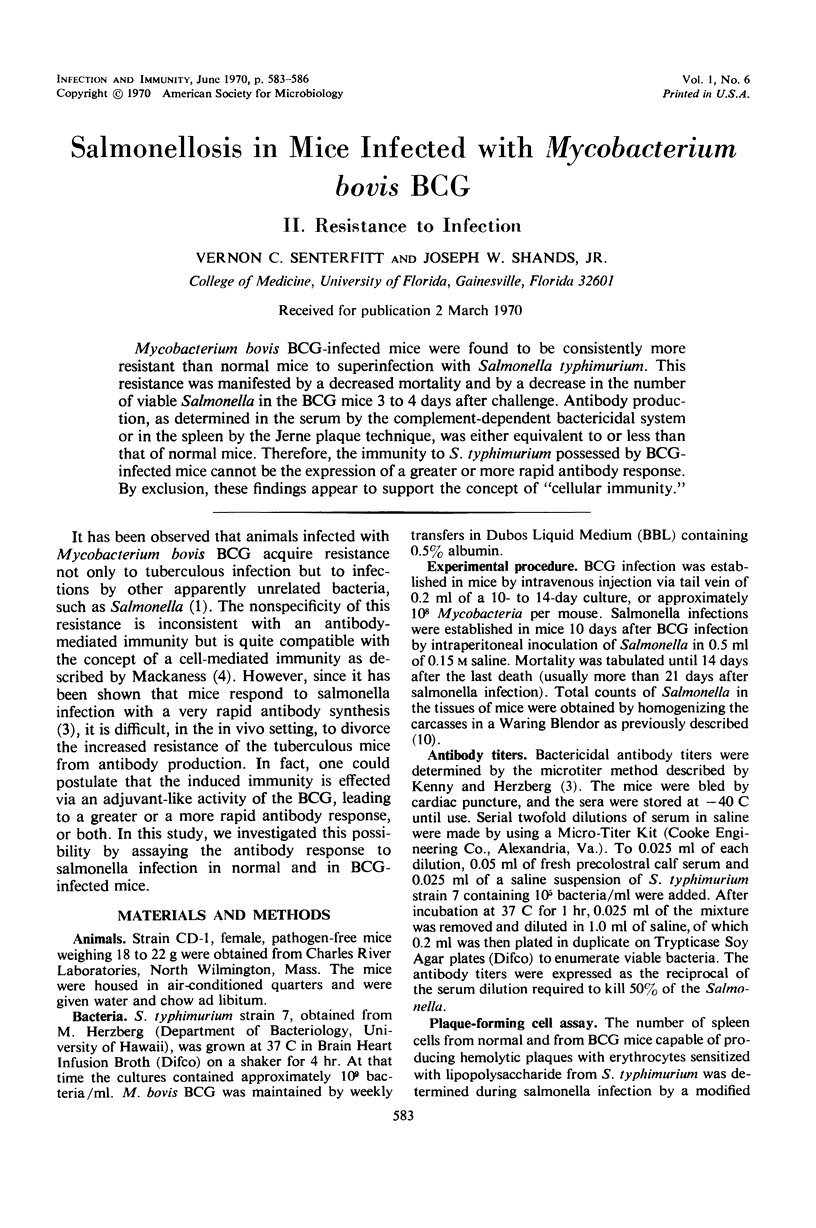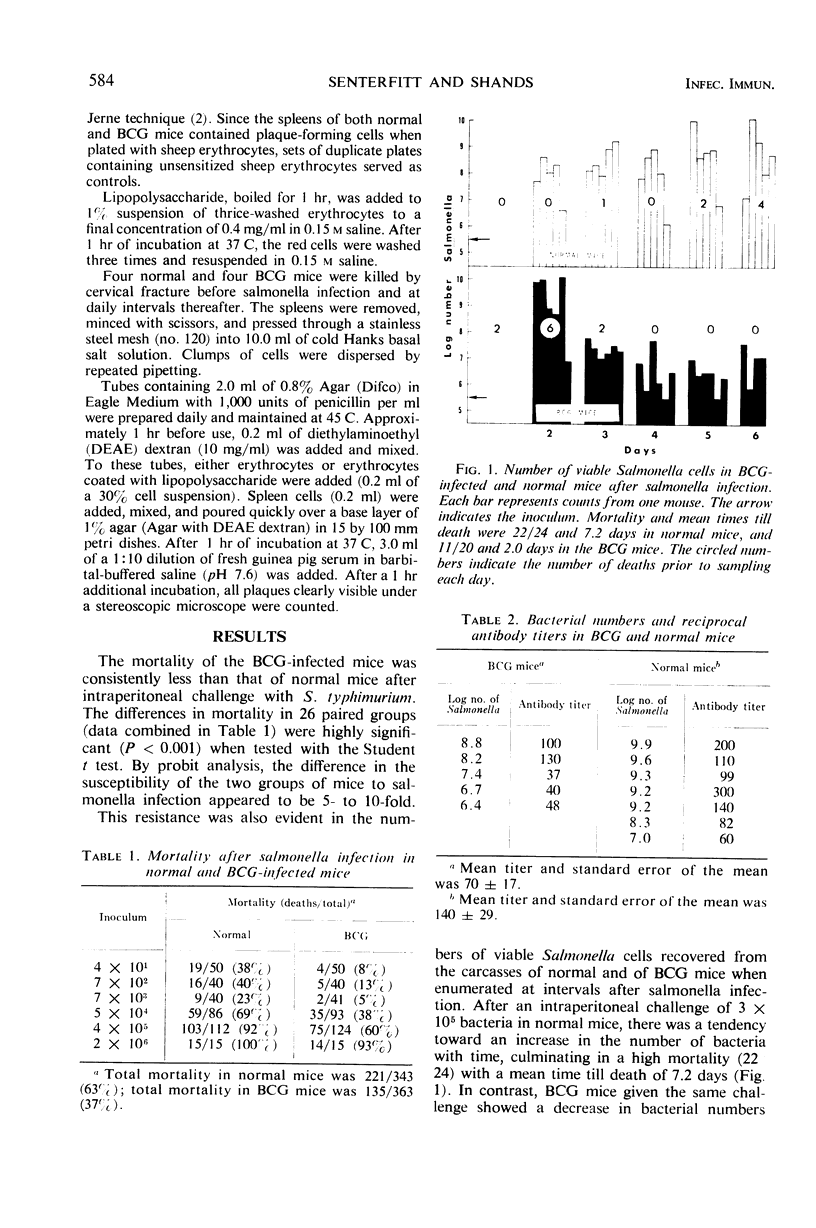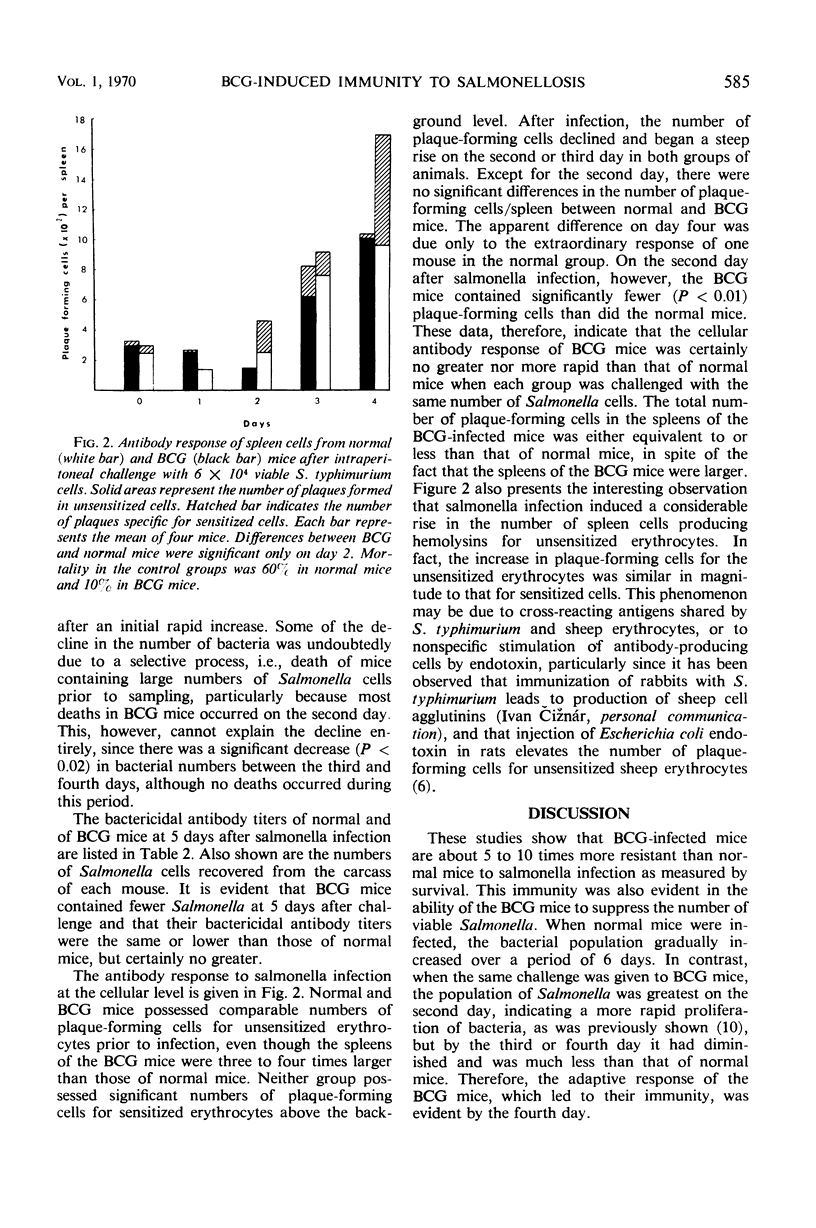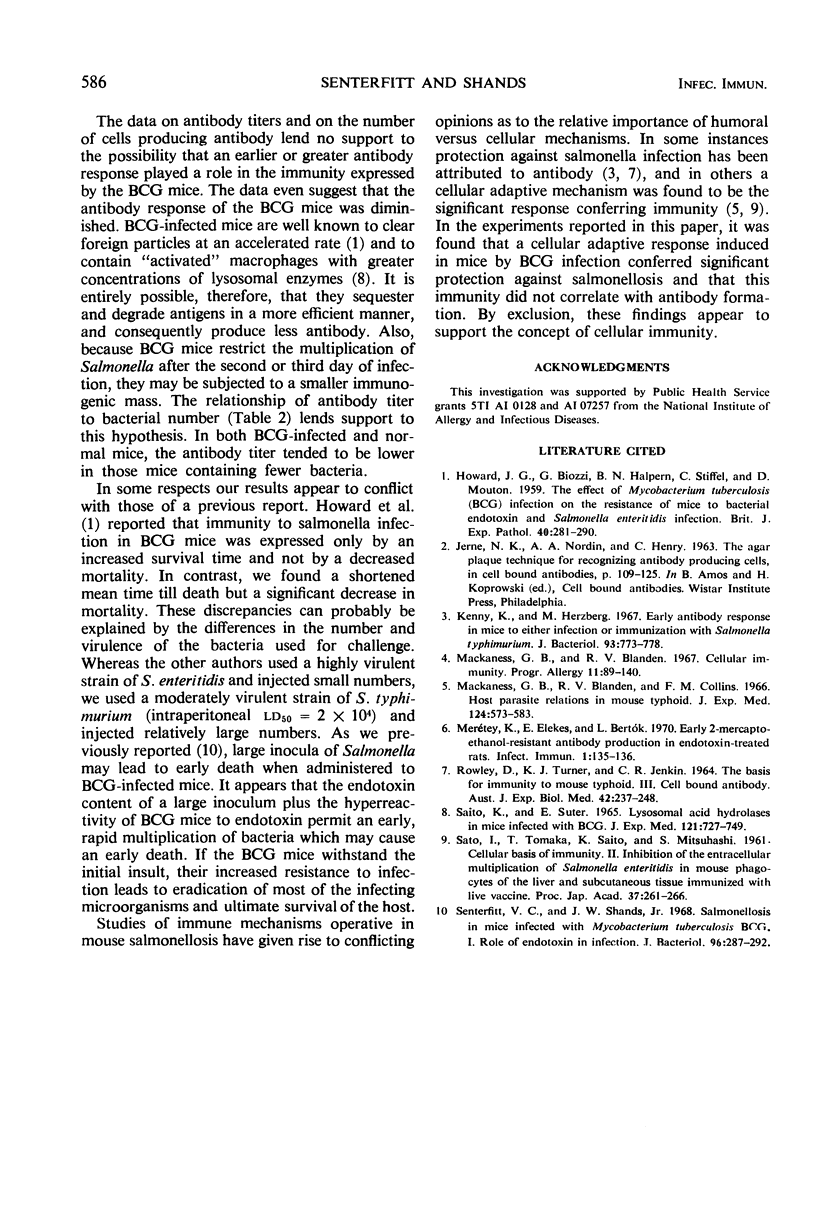Abstract
Mycobacterium bovis BCG-infected mice were found to be consistently more resistant than normal mice to superinfection with Salmonella typhimurium. This resistance was manifested by a decreased mortality and by a decrease in the number of viable Salmonella in the BCG mice 3 to 4 days after challenge. Antibody production, as determined in the serum by the complement-dependent bactericidal system or in the spleen by the Jerne plaque technique, was either equivalent to or less than that of normal mice. Therefore, the immunity to S. typhimurium possessed by BCG-infected mice cannot be the expression of a greater or more rapid antibody response. By exclusion, these findings appear to support the concept of “cellular immunity.”
Full text
PDF



Selected References
These references are in PubMed. This may not be the complete list of references from this article.
- HOWARD J. G., BIOZZI G., HALPERN B. N., STIFFEL C., MOUTON D. The effect of Mycobacterium tuberculosis (BCG) infection on the resistance of mice to bacterial endotoxin and Salmonella enteritidis infection. Br J Exp Pathol. 1959 Jun;40(3):281–290. [PMC free article] [PubMed] [Google Scholar]
- Kenny K., Herzberg M. Early antibody response in mice to either infection or immunization with Salmonella typhimurium. J Bacteriol. 1967 Mar;93(3):773–778. doi: 10.1128/jb.93.3.773-778.1967. [DOI] [PMC free article] [PubMed] [Google Scholar]
- Mackaness G. B., Blanden R. V. Cellular immunity. Prog Allergy. 1967;11:89–140. [PubMed] [Google Scholar]
- Mackaness G. B., Blanden R. V., Collins F. M. Host-parasite relations in mouse typhoid. J Exp Med. 1966 Oct 1;124(4):573–583. doi: 10.1084/jem.124.4.573. [DOI] [PMC free article] [PubMed] [Google Scholar]
- Merétey K., Elekes E., Bertók L. Early 2-mercaptoethanol-resistant antibody production in endotoxin-treated rats. Infect Immun. 1970 Jan;1(1):135–136. doi: 10.1128/iai.1.1.135-136.1970. [DOI] [PMC free article] [PubMed] [Google Scholar]
- ROWLEY D., TURNER K. J., JENKIN C. R. THE BASIS FOR IMMUNITY TO MOUSE TYPHOID. 3. CELL-BOUND ANTIBODY. Aust J Exp Biol Med Sci. 1964 Apr;42:237–248. doi: 10.1038/icb.1964.25. [DOI] [PubMed] [Google Scholar]
- SAITO K., SUTER E. LYSOSOMAL ACID HYDROLASES AND HYPERREACTIVITY TO ENDOTOXIN IN MICE INFECTED WITH BCG. J Exp Med. 1965 May 1;121:739–749. doi: 10.1084/jem.121.5.739. [DOI] [PMC free article] [PubMed] [Google Scholar]
- Senterfitt V. C., Shands J. W., Jr Salmonellosis in mice infected with Mycobacterium tuberculosis BCG. I. Role of endotoxin in infection. J Bacteriol. 1968 Aug;96(2):287–292. doi: 10.1128/jb.96.2.287-292.1968. [DOI] [PMC free article] [PubMed] [Google Scholar]


